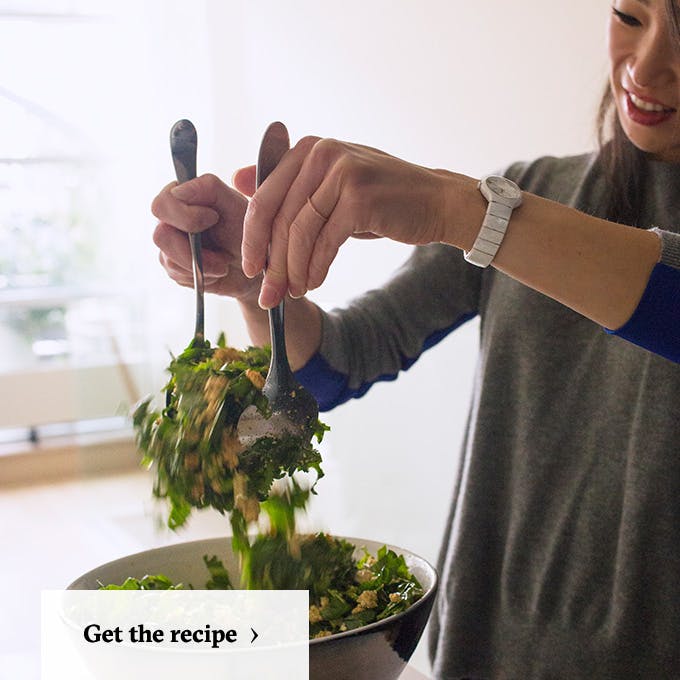How To Make Whole Fish For Chinese Lunar New Year
Make a modern Lunar New Year feast from the 'Lucky Rice' Cookbook
We may receive a commission on purchases made from links.
It's a blisteringly cold afternoon in Manhattan, and Danielle Chang is pivoting around her kitchen in slippers, pulling bottles of soy, rice vinegar and Chinese cooking wine from slick grayish green cupboards and a refrigerator that when open reveals what looks like a lifetime supply of various chile-laced condiments. She's preparing to cook an entire red snapper (see the recipe), whose glossy eye is staring at us from a plate on the counter.
Chang is the force behind Lucky Rice, a six-year-old organization that celebrates contemporary Asian cuisines through night markets; meals prepared by chefs like Danny Bowien, Masaharu Morimoto and Anita Lo; and discussions on topics like Buddhism in the kitchen. Today, she's welcomed us over to watch her prepare part of a traditional feast for Chinese Lunar New Year, which starts Monday: that whole snapper, steamed and dressed with a flurry of ginger and scallion matchsticks that are scorched by hot oil just before serving, and an aromatic salad of chrysanthemum greens and tofu that treats cilantro as a main player, not a supporting herb.
As she prepares the bamboo steamer, chops the cilantro with a wood-handled cleaver and even jokingly raises the fish to her lips for a kiss, it's clear these are dishes she's made for years, though she pauses for a moment to check a recipe. She's making sure to prepare the exact rendition she included in her new book, Lucky Rice: Stories and Recipes from Night Markets, Feasts, and Family Tables ($25).
"I wanted the book to be the opposite of 101 easy Pan-Asian recipes . . . . There's no need for me to write that book," Chang says. Instead, her cookbook is an introduction to some of the most popular (and most approachable for home cooks) dishes from across Asia, like a simple ma po tofu and Indonesian fried rice. Each is accompanied by a short story that is meant to introduce the dish to readers and act as a sort of invitation, perhaps particularly for those who are new to cooking Asian cuisines. "I'm approaching this from the perspective of Lucky Rice, which is always to be a storyteller and to talk about the cultural impact of a certain dish," Chang explains.

Interspersed with the classic dishes like the fish she's preparing now are more modern recipes like a michelada tinged with fish sauce and togarashi, as well as her rendition of Roy Choi's kimchi tacos. "That's probably the most authentic dish you can find," she says while cooking. "Hispanics and Koreans live side by side in L.A.'s Koreatown, so it's natural that a tortilla and kimchi would become best friends and give birth to the kimchi taco. I see it as a really authentic kind of bastardized child, a product of migration and culinary collisions."
But this afternoon isn't about that—it's about the New Year and simple dishes that have been made for generations that are meant to bring luck to those who eat them. As she cooks, Chang explains that she chose a red fish for luck, and "this being the year of the fire monkey, I wanted to especially bring in that element." The fish remaining whole is also essential. "You don't want to cut into anything, because that's like cutting off your luck for the year." As we talk through the traditional feast of salads, soups, meat, noodles and rice, wishes for an auspicious year become almost a chorus refrain.
One that's interrupted when the fish and salad are ready. Both dishes are deceptively simple but deeply flavorful, full of sesame and the freshness of ginger and cilantro. In the craze of New York City, that seems a good wish for the year ahead.

